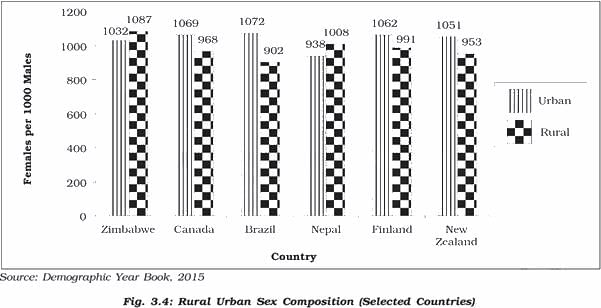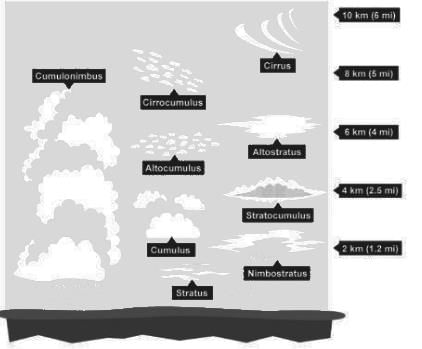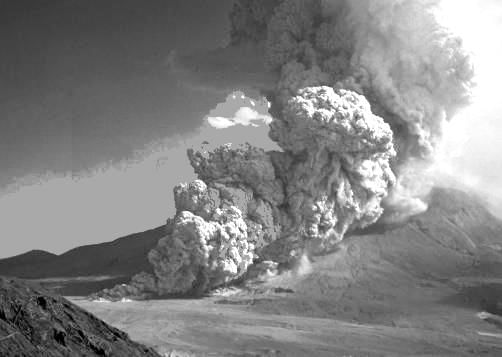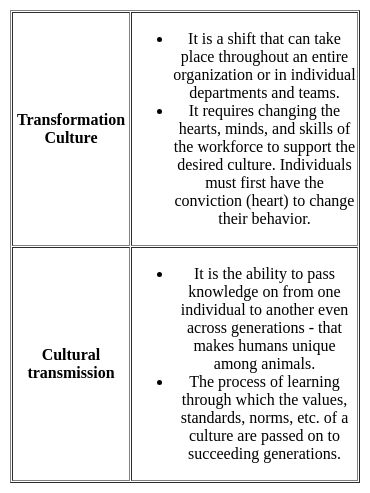UGC NET Paper 2 Geography Mock Test - 3 - UGC NET MCQ
30 Questions MCQ Test UGC NET Mock Test Series 2025 - UGC NET Paper 2 Geography Mock Test - 3
Western disturbances are extratropical storms that bring sudden winter rain to the northern parts of India. They originate in ______.
Consider the following statements with reference to most of the western countries:
1. Males outnumber females in rural areas.
2. Females outnumber the males in urban areas.
Which of the above statement(s) is/are correct?
The following item consists of two statements, statement I and statement II. Examine these two statements carefully and select the correct answer from the code given below.
Statement I:
Summer is the favourable season for lumbering activity.
Statement II:
The Siberian region has a thriving lumbering industry.
What is the name of the national portal developed and hosted by ISRO that provides remote sensing and GIS services?
Which of the following is NOT a theme that influenced Ratzel's work?
Assertion- Richard Hartshorne attempts to capture difference between systematic geography and regional geography.
Reasoning- Regional geography is study of any two-dimensional area of interest.
Select the correct answer from options given below :
Assertion(A)- Exogenous processes are responsible for gradation.
Reason(R)- Weathering and erosion is often described as the essential phase in the denudation process of landscapes.
Choose the correct option:
Match List I with List II and select the correct answer using the code given below the Lists :
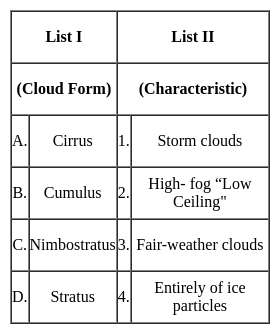
Consider the following -
1. Methane
2. Nitrous Oxide
3. Halons
Which of the above is/are responsible for depletion of stratospheric ozone?
The dust and ash material hurled from the volcanoes are termed as:
The temperature-depth profile of the ocean is an interesting topic of study. Which of the following statements is/are incorrect regarding this?
1. About 90 per cent of the total volume of water is found below the thermocline in the deep ocean.
2. The thermocline layer is characterised by a rapid decrease in temperature with increasing depth.
3. The highest temperature of the ocean waters is recorded at the equator.
Identify the correct answer from the codes given below.Which of the following is true about Tropical Rain forest?
(A) These forest are called evergreen forests.
(B) The trees in these forests shed their leaves at different times of the year.
(C) Sal, Teak and Shisham are important trees of these forests.
(D) These forests are called monsoon forests.
Choose the correct option
Which of the following statement is correct related to the rocks?
1. Rocks formed out of solidification of magma and lava and are known as igneous rocks.
2. Acidic rocks does not constitute the sial portion of the crust.
Which of the following statements about minerals are correct?
(A) Minerals are created by natural processes without any human interference
(B) Mica and chromite are nonferrous minerals
(C) Minerals lying at shallow depths are taken out through open cast mining
(D) Minerals are a non-renewable resource
i. Light and temperature are direct ecological factors.
ii. Indirect factors include soil structure, altitude, wind and slope.
iii. Edaphic factors and biotic factors can be included in physical factors.
Choose the correct option from below:
Deltas are formed where the shores are free of
Given below are two statements. One is labelled as Assertion (A) and the other is labelled as Reason (R).
Assertion (A): Development in ICT has led to increase in technical field of education in India.
Reason (R) : There has been increase in investment in ICT sector in India.
Select the correct answer from options given below:
For the first time, over 3000 years ago the _____ prepared feasible maps, showing particularly boundaries with a view of making proper assessment of revenue.
|
92 docs|125 tests
|


